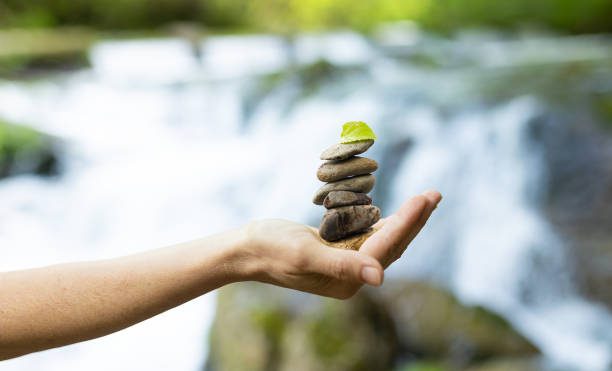In a fast-paced world filled with conflict, division, and environmental degradation, the search for peace often feels overwhelming. Yet, if we look closely, nature provides timeless lessons about balance, cooperation, and renewal. The concept of the Ecology of Peace is rooted in observing how natural ecosystems thrive through interdependence and harmony rather than competition and
In a fast-paced world filled with conflict, division, and environmental degradation, the search for peace often feels overwhelming. Yet, if we look closely, nature provides timeless lessons about balance, cooperation, and renewal. The concept of the Ecology of Peace is rooted in observing how natural ecosystems thrive through interdependence and harmony rather than competition and dominance. From forests that recycle nutrients to rivers that sustain diverse forms of life, nature reveals patterns that humanity can adopt to restore peace. By reconnecting with these lessons, societies may discover sustainable ways of living together in balance.
Interconnectedness as a Foundation of Peace
Nature demonstrates that every living organism, no matter how small, contributes to the health of an ecosystem. In forests, fungi connect tree roots through vast underground networks, allowing them to share nutrients. This interdependence reflects the principles of the Ecology of Peace, where cooperation rather than isolation leads to strength and resilience. When societies embrace interconnectedness, communities flourish instead of fragmenting. Just as no tree can survive without soil, water, and air, no human community can sustain itself without mutual respect, empathy, and collective responsibility for shared resources.
Learning from Natural Cycles
Every aspect of nature functions in cycles the water cycle replenishes rivers, the carbon cycle regulates the atmosphere, and seasons ensure renewal. This circular approach inspires human societies to see peace not as a fixed state but as an ongoing process. Embracing the Ecology of Peace requires valuing cycles of conflict resolution, forgiveness, and renewal. Just as a forest recovers after a wildfire, communities can rebuild after turmoil. In this context, initiatives that Support children’s education in Georgia and other regions play a vital role in nurturing generational renewal, ensuring future leaders grow with values of harmony and responsibility.
Diversity as Strength
Biodiversity is not only beautiful but also essential for the resilience of ecosystems. A diverse ecosystem can withstand challenges better than a monoculture because it relies on multiple species to sustain balance. Likewise, the Ecology of Peace emphasizes cultural and social diversity as a foundation of strength. When societies honor different traditions, perspectives, and voices, they become more adaptable in addressing challenges. Exclusion, on the other hand, creates fragility. Diversity ensures that no single failure disrupts the entire system, whether in nature or in human communities seeking peace.
Balance Between Use and Renewal
Nature teaches that overconsumption leads to imbalance. When resources are extracted faster than they are replenished, ecosystems collapse. This is a critical lesson within the Ecology of Peace human beings must learn to balance their use of resources with efforts to renew and restore them. Practices like sustainable farming, renewable energy, and conservation reflect this principle. Just as rivers overflow when dams disrupt their flow, societies too face crises when greed overrides stewardship. Balance requires restraint, humility, and a deep respect for the limits that sustain life.
Role of Symbiosis
In nature, countless examples of symbiosis exist bees pollinate flowers while feeding on nectar, and cleaner fish sustain themselves by removing parasites from larger species. These relationships reveal the beauty of mutual benefit. Translating this into the Ecology of Peace, societies thrive when cooperation and shared benefit are prioritized over exploitation. Symbiosis teaches that giving and receiving are inseparable aspects of harmony. When communities invest in one another’s well-being, just as species in nature do, they create resilience and strength that ensure long-term peace and prosperity.
Healing Through Regeneration
Natural ecosystems often regenerate after disturbance. Grasslands regrow after fire, coral reefs recover after storms, and wetlands restore themselves after flooding. This resilience shows that healing is possible even after devastation. The Ecology of Peace applies this lesson by emphasizing reconciliation and rebuilding after conflict. Instead of seeing damage as permanent, societies can commit to processes of repair and renewal. By nurturing trust, re-establishing communication, and creating shared goals, communities regenerate peace, much like forests re-emerge greener after a storm.
Importance of Patience and Time
Nature operates on timelines that cannot be rushed. A tree takes decades to mature, rivers carve valleys over centuries, and ecosystems evolve over millennia. The Ecology of Peace reminds us that peace, too, requires patience, persistence, and long-term commitment. Quick fixes may offer temporary relief, but lasting peace develops through consistent effort and nurturing. Communities must learn to invest in processes that may take generations, ensuring the foundations of peace are deep and enduring, like the roots of an ancient tree.
Lessons of Balance in Urban Life
Modern cities often seem far removed from natural processes, yet they too can benefit from the lessons of the Ecology of Peace. Urban planning that integrates green spaces, renewable energy, and equitable resource distribution creates healthier, more peaceful environments. Nature-inspired design principles show that when balance and harmony are prioritized, even dense human settlements can reduce conflict and stress. Learning from ecosystems encourages sustainable solutions in housing, transportation, and education, ensuring that human innovation aligns with ecological wisdom.
Building a Culture of Respect
At the heart of both natural ecosystems and peaceful societies is respect. Predators hunt only what they need, plants adapt to their environments without exhausting them, and rivers sustain life without choosing favorites. The Ecology of Peace teaches that respect for life, diversity, and interdependence is fundamental. By fostering respect in education systems, family values, and governance, humanity can rebuild connections not only with one another but also with the Earth itself. Respect ensures continuity, balance, and the preservation of peace across generations.
Conclusion
The Ecology of Peace offers humanity a profound framework for restoring balance and harmony. By observing nature’s cycles, diversity, symbiosis, and regeneration, we learn that peace is not static but dynamic a living process that requires constant care. Choosing balance over exploitation, cooperation over competition, and patience over haste can guide societies toward sustainable peace. Just as ecosystems flourish when every part works in harmony, human communities can thrive when they embrace interdependence and mutual respect. In doing so, we align ourselves with the timeless wisdom of nature, ensuring a more peaceful and balanced future for generations to come.



















Leave a Comment
Your email address will not be published. Required fields are marked with *